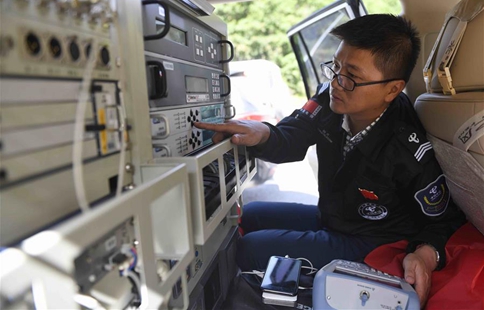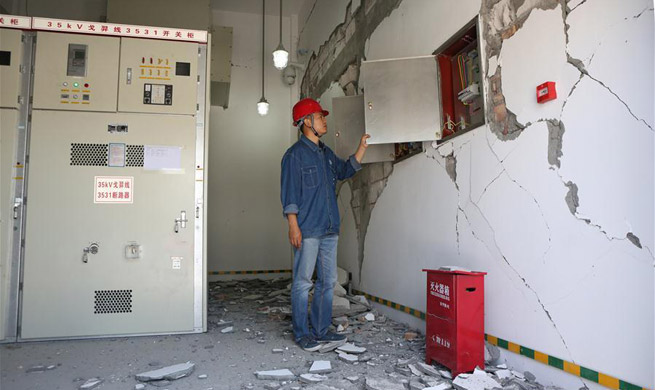WASHINGTON, Aug. 9 (Xinhua) -- Scientists in Japan and China said Wednesday they have discovered an "unexpected" approach to capture and store carbon dioxide away from the atmosphere while working toward the elusive lithium-air battery.
In a study published in Joule, a new interdisciplinary energy journal from Cell Press, the researchers reported a new strategy to isolate solid carbon dust from gaseous carbon dioxide (CO2) by using a designing intended for a lithium-CO2 battery.
Converting carbon dioxide emissions into other carbon-containing compounds is desirable due to carbon dioxide's contribution to the greenhouse effect and global warming.
Examples range from natural processes, such as plants turning CO2 into oxygen and sugars, to man-made ones, such as injecting carbon dioxide into rock formations to be trapped as carbonate minerals.
"The problem with most physical and chemical pathways for CO2 fixation is that their products are gases and liquids that need to be further liquefied or compressed, and that inevitably leads to additional energy consumption and even more CO2 emissions," senior author Haoshen Zhou of Japan's National Institute of Advanced Industrial Science and Technology and China's Nanjing University, said in a statement.
"Instead, we are demonstrating an electrochemical strategy for CO2 fixation that yields solid carbon products, as well as a lithium-CO2 battery that can provide the energy necessary for that process."
The researchers worked out the carbon fixation strategy when they tried to recharge a lithium-CO2 battery prototype.
For a reversible Li-CO2 battery, the lithium carbonate and carbon produced during discharge will be fully oxidized to lithium ions and CO2 during recharge.
However, the new study found the so-called oxidation process is irreversible as the lithium carbonate is decomposed while the carbon obtained remains fixed.
In addition, the researchers found that incorporating a tiny amount of ruthenium metal into their design as a catalyst can help avoid extensive carbon deposition and induce better reversibility, converting their carbon-fixing apparatus into a functioning Li-CO2 battery.
The fixation technique might also be adapted to scrub other harmful or polluting gases such as carbon monoxide, sulfur dioxide, nitric oxide, and nitrogen dioxide from the atmosphere, Zhou said.
Looking ahead, the researchers are also excited by their system's potential to perhaps lead to a pathway for converting carbon dioxide into pure carbon and oxygen gas.
"Attaining the release of oxygen gas upon charging, coupled with the accumulation of solid carbon, would realize an electrochemical carbon dioxide fixation strategy analogous to photosynthesis," said Zhou.

















